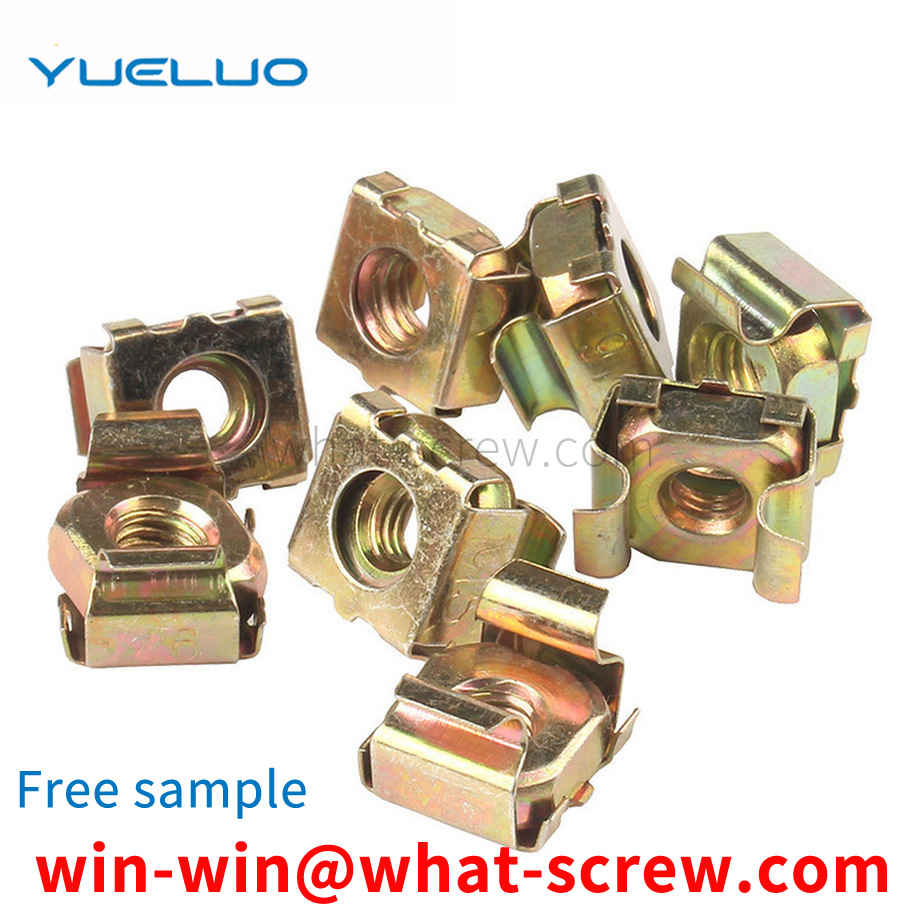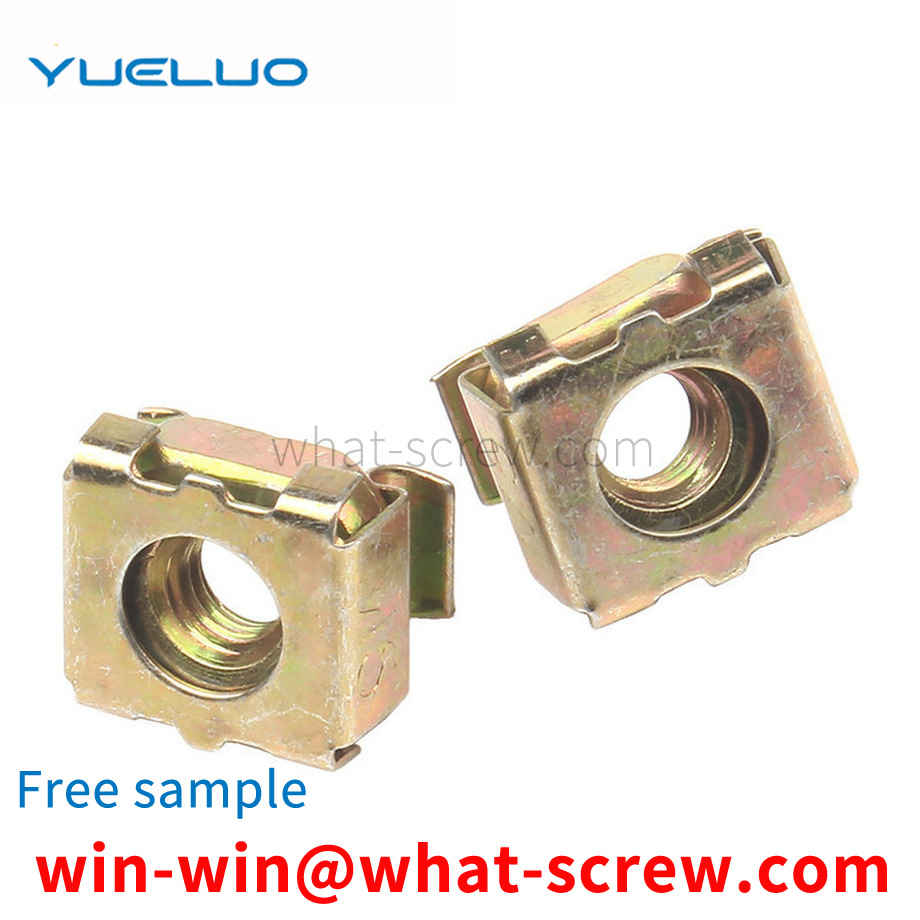Heat resistance refers to both the oxidation resistance or gas medium corrosion resistance at high temperature, that is, thermal stability, and at the same time, it has sufficient strength at high temperature, that is, thermal strength. As the material requirements of products produced by customers are getting higher and higher, the requirements for screws used in product materials are also getting higher and higher. When product materials face harsh environments and special occasions, more and more high-quality mechanical properties of stainless steel screws are used. Therefore, stainless steel screws were selected. The requirements are getting higher and higher, and the material of stainless steel screws is getting higher and higher. Therefore, many ordinary stainless steel screws SUS201 are replaced by stainless steel SUS304 screws and stainless steel screws SUS316. Of course, if some requirements are not so high, general customers will choose stainless steel screws SUS201, which are relatively cheap in cost.
The screw refers to the screw (foreign name: Screw), which is a tool that uses the physical and mathematical principles of the oblique circular rotation of the object and the frictional force to gradually fasten the utensils and parts. Screw installation names are divided into: machine screws, self-tapping screws, drill-tail screws, wallboard screws, fiberboard screws, wood screws, hexagonal wood screws, non-prolapse screws, combination screws, miniature screws, furniture screws, electronic screws, chain belt screws .
Nuts and washers are both small and medium-sized components of the tension reinforcement system, and they are easily lost on the construction site when used separately, which is not conducive to the storage management of turnover materials; 3) During the process of formwork support and removal, they must be installed individually And demolition, thus adding a construction process, affecting the efficiency of construction.
Stainless steel screws are classified into austenitic stainless steel, ferritic stainless steel, martensitic stainless steel, and precipitation hardening stainless steel. The selection of stainless steel screws is also based on principles. Where to start, let you choose the stainless steel screws you need. After comprehensive and comprehensive consideration of these five aspects, the grades, varieties, specifications and material standards of stainless steel screws are finally determined. Austenitic stainless steel: the most basic alloying elements of austenitic stainless steel are chromium and nickel. The grade is a chromium-nickel austenitic stainless steel with a chromium content of about 18% and a nickel content of about 8%, often called 18-8 stainless steel. The element ratio of chromium and nickel basically ensures that the structure of the steel is stable austenitic ferritic stainless steel: 430 type ordinary chromium steel, its corrosion resistance and heat resistance are better than 410 type, magnetic, but it It cannot be strengthened by heat treatment, and is suitable for stainless steel screws with slightly higher corrosion resistance and heat resistance and general strength requirements. Martensitic stainless steel: Type 410 and 416 can be strengthened by heat treatment, with a hardness of 35 to 45HRC, and good machinability. They are used for general-purpose heat-resistant and corrosion-resistant stainless steel screws. Type 416 has a slightly higher sulfur content and is a free-cutting stainless steel. Type 420, sulfur content? R0.15%, improved mechanical properties, can be strengthened by heat treatment, maximum hardness value of 53 ~ 58HRC, used for stainless steel screws requiring higher strength. Precipitation hardening stainless steel: 17-4PH, PH15-7Mo, they can get higher strength than the usual 18-8 type stainless steel, so they are used for high-strength, corrosion-resistant stainless steel stainless steel screws. A-286, a non-standard stainless steel, has higher corrosion resistance than commonly used Type 18-8 stainless steels, as well as good mechanical properties at elevated temperatures. Used as high-strength, heat-resistant, corrosion-resistant stainless steel screws, can be used to 650 ~ 700 ℃. Austenitic stainless steel: The commonly used models are 302, 303, 304, and 305, which are the so-called 18-8 austenitic stainless steels. Both corrosion resistance and mechanical properties are similar. The starting point of selection is the production process method of stainless steel screws, and the method depends on the size and shape of stainless steel screws, and also depends on the quantity of production. Type 302 is used for machined screws and self-tapping bolts. Type 303 In order to improve machinability, Type 303 stainless steel is added with a small amount of sulfur and is used to machine nuts from bar stock. Type 304 is suitable for hot heading stainless steel screws, such as longer gauge bolts, large diameter bolts, which may be beyond the scope of the cold heading process. Type 305 is suitable for cold heading processing of stainless steel screws, such as cold formed nuts, hex bolts. Type 309 and Type 310, their Cr content and Ni content are higher than 18-8 type stainless steel, suitable for stainless steel screws working at high temperature. Types 316 and 317, both of which contain the alloying element Mo, have higher high temperature strength and corrosion resistance than 18-8 type stainless steel. Type 321 and Type 347, Type 321 contains a relatively stable alloying element Ti, Type 347 contains Nb, which improves the intergranular corrosion resistance of the material. It is suitable for stainless steel standard parts that are not annealed after welding or serve at 420~1013℃.
Heat resistance refers to both the oxidation resistance or gas medium corrosion resistance at high temperature, that is, thermal stability, and at the same time, it has sufficient strength at high temperature, that is, thermal strength. As the material requirements of products produced by customers are getting higher and higher, the requirements for screws used in product materials are also getting higher and higher. When product materials face harsh environments and special occasions, more and more high-quality mechanical properties of stainless steel screws are used. Therefore, stainless steel screws were selected. The requirements are getting higher and higher, and the material of stainless steel screws is getting higher and higher. Therefore, many ordinary stainless steel screws SUS201 are replaced by stainless steel SUS304 screws and stainless steel screws SUS316. Of course, if some requirements are not so high, general customers will choose stainless steel screws SUS201, which are relatively cheap in cost.
We have many years of experience in the production and sales of screws, nuts, flat washers, etc. The main products are: butterfly spring washers, small outer diameter blind hole rivet standoffs, flat spring washers nut screws, box cover fixing handle bolts and other products. We can provide you with the right fastener solution for you.



















 Service Hotline
Service Hotline




